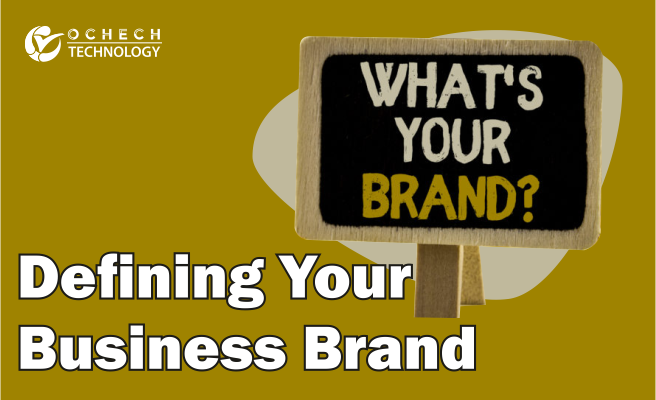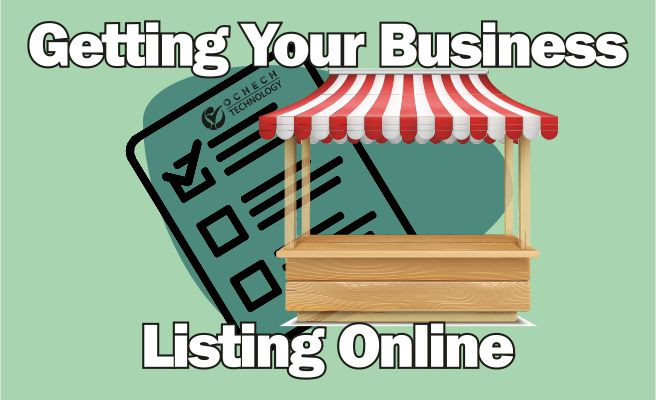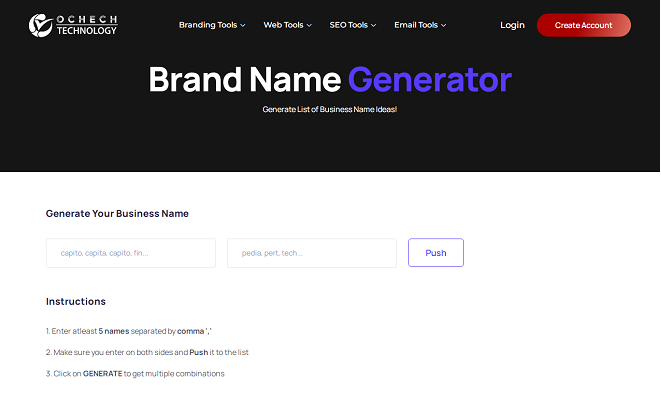
Defining Your Business Brand
INTRODUCTION
Defining your business brand is an important step in building and growing your company. It involves determining the values, personality, and messaging that will be used to represent your business to the public.
A strong brand can help to differentiate your business from competitors, establish trust and credibility with customers, and motivate employees. It also helps to create a consistent and cohesive image that reflects the essence of your company.
Developing a strong business brand is important for several reasons. It helps to differentiate a company from its competitors, and it helps to establish trust and credibility with customers. A strong brand can also serve as a motivator for employees, as it gives them a clear sense of purpose and direction.
There are several steps that businesses can take to define their brand. These include:
IDENTIFYING YOUR BUSINESS TARGET AUDIENCE: Identifying your business target audience is an important step in defining your business brand. It involves understanding the needs and values of the people you are trying to reach, as well as their demographics and behaviors. To identify your target audience, you can start by considering the following questions:
- Who is most likely to be interested in your products or services?
- What are their needs and goals?
- What are their values and priorities?
- What motivates them to make a purchase?
There are several tools and techniques that you can use to identify your target audience, including market research, customer surveys, and focus groups. By gathering this information, you can gain a better understanding of the people you are trying to reach and how to effectively communicate with them.
Once you have identified your target audience, you can use this information to shape your brand messaging and marketing efforts. By targeting your marketing efforts toward the right people, you can increase the chances of success for your business.
DEFINING YOUR BUSINESS BRAND PERSONALITY: Defining your business brand personality is an important step in building and growing your company. It involves determining the overall tone and style that you want your brand to convey. This should be consistent with your company's values and mission, and it should appeal to your target audience. Some examples of brand personalities include: Friendly and approachable, Professional and sophisticated, Fun and energetic, Luxurious and exclusive, and Honest and reliable. To define your brand personality, you can start by considering the following questions:
- What are your company's values and mission?
- How do you want your customers to perceive your brand?
- What words or phrases best describe your brand?
- What are some adjectives that you would use to describe your brand?
Once you have defined your brand personality, it's important to be consistent in your messaging and communication with your audience. This will help to establish a clear and cohesive brand identity that resonates with your target audience.
DEVELOPING YOUR BUSINESS BRAND POSITIONING STATEMENT: A brand positioning statement is a brief statement that explains how your brand is different from competitors, and what value it offers to customers. It should be unique to your business and should communicate the benefits of your products or services.
Developing a brand positioning statement is an important step in defining your business brand. It helps to clarify the unique value that your brand offers and to differentiate it from competitors. To develop your brand positioning statement, you can start by considering the following questions:
- What are the unique benefits of your products or services?
- What makes your brand different from competitors?
- How does your brand solve customer problems or meet their needs?
- What value does your brand offer to customers?
Your brand positioning statement should be concise and easy to understand, and it should be based on the unique value that your brand offers to customers. It should also be consistent with your overall brand messaging and personality.
Once you have developed your brand positioning statement, you can use it as a guide to shape your marketing and communication efforts. This will help to ensure that your brand message is consistent and clear and that it effectively communicates the value of your products or services to your target audience.
DESIGNING YOUR BUSINESS BRAND VISUAL IDENTITY: Designing your business brand visual identity is an important step in defining your brand. It involves creating a logo and other visual elements that will be used to represent your brand to the public.
Your visual identity should be cohesive and consistent, and it should reflect your brand personality and values. Some key elements to consider when designing your brand visual identity include:
- Logo: Your logo is the primary visual element that represents your brand. It should be unique, memorable, and easily recognizable.
- Color scheme: The colors that you use in your branding should be consistent and should reflect your brand personality.
- Typography: The fonts that you use in your branding should be consistent and should be easy to read.
- Imagery: The images that you use in your branding should be consistent and should reflect your brand personality and values.
When designing your brand visual identity, it's important to work with a professional designer or branding agency to ensure that your branding is consistent, cohesive, and effective. They can help you to create a visual identity that effectively communicates your brand message and resonates with your target audience.
ESTABLISHING YOUR BUSINESS BRAND GUIDELINES: Establishing brand guidelines is an important step in defining your business brand. These guidelines outline how your brand should be presented to the public, including the use of your logo, colors, fonts, and other visual elements.
Brand guidelines help to ensure that your brand is consistently presented to the public, which helps to establish a strong and cohesive brand identity. They also help to ensure that all materials produced by your company, such as marketing materials, websites, and social media posts, are consistent with your brand's overall messaging and personality.
FINAL TAKEAWAY
In conclusion, defining your business brand is an essential step in building and growing your company. It involves determining the values, personality, and messaging that will be used to represent your business to the public. A strong brand can help to differentiate your business from competitors, establish trust and credibility with customers, and motivate employees.
To define your business brand, you will need to identify your target audience, define your brand personality, develop a brand positioning statement, design a visual identity, and establish brand guidelines. By following these steps, you can create a strong and cohesive brand that effectively communicates your values and personality to your target audience.
Keep in mind that your brand is not static and will need to be reviewed and updated over time to ensure that it remains relevant and effective. Regularly evaluating and refining your brand can help you stay ahead of the competition and meet the changing needs of your customers.
Feel free to contact us at Ochech Technology for your business branding & consultation.
Please help us to Like, Follow & Shear







